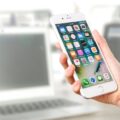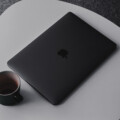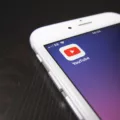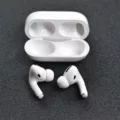Are you looking for a way to connect your iPhone to your Mac wirelessly? Well, you’re in luck! Connecting an iPhone to a Mac computer is easy and can be done in just a few steps. This guide will walk you through the process of connecting your iPhone to your Mac wirelessly, as well as other helpful tips and tricks for making the most of this connection.
First, let’s go over the basics. To connect an iPhone to a Mac wirelessly, both devices need to have Bluetooth enabled. On your iPhone, go to Settings > General > Bluetooth and toggle it on. Similarly, on your Mac, go to the Apple menu > System Preferences > Bluetooth and turn it on as well. Once both devices have Bluetooth enabled, they should automatically detect each other and prompt you with a connection request from the smartphone. Select “Connect” when prompted and the two will be connected wirelessly.
Once your devices are connected via Bluetooth, there are several ways you can use them together. For example, you can transfer files from one device to another using AirDrop or iCloud Drive (if both devices are running iOS 8 or higher). You can even sync data between both devices using wireless syncing with Wi-Fi connections (if both devices are running iOS 5 or higher).
In addition to transferring data between the two devices wirelessly, you can also use them together for other tasks such as listening to music from your iPhone on your Mac’s speakers or mirroring what’s on the screen of your iPhone onto the screen of your Mac (using AirPlay). The possibilities are endless!
Finally, if you ever need help troubleshooting any issues that arise while connecting or using both devices together wirelessly, Apple offers free support for their products over the phone or in chat. So don’t hesitate to reach out if you ever need assistance with getting set up or running into problems during use.
That wraps it up for our guide on how to connect an iPhone to a Mac wirelessly! We hope this was helpful in getting you started with setting up this connection between both devices so that you can start taking advantage of all its powerful features right away!
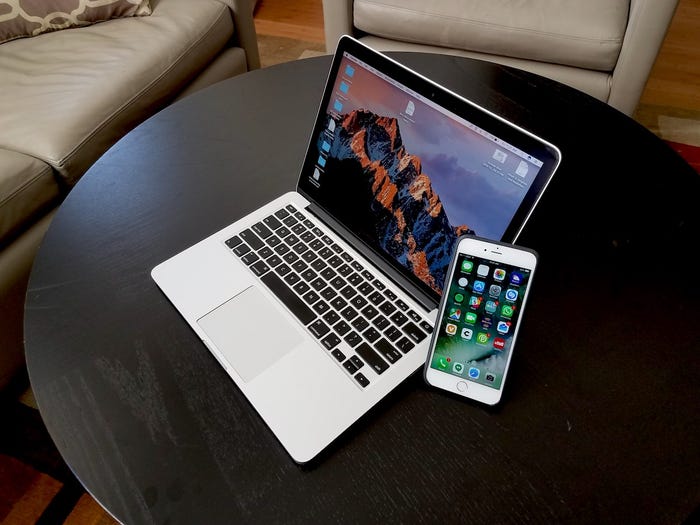
Pairing an iPhone with a Mac
To pair your iPhone with your Mac, first, make sure that both devices are turned on and that Bluetooth is enabled on your Mac. Then, click the Bluetooth icon in the menubar at the top right of your screen. In the System Preferences window, select Bluetooth and you’ll see a list of Bluetooth items that you can connect to. Select the image of your iPhone and you’ll get a connection request from the smartphone. Click Connect to make the connection, and you should now be able to use your iPhone with your Mac.
Connecting an iPhone to a Mac Without Using a USB Cable
You can connect your iPhone to your Mac without using a USB cable by using Bluetooth. On your iPhone, go to Settings > General > Bluetooth and toggle the Bluetooth setting on. On your Mac, go to the Apple menu > System Preferences > Bluetooth, and switch the Bluetooth option on there as well. Once both devices have been switched on, you’ll see a list of available devices to connect. Select your iPhone from the list, and it will begin connecting. After they are paired, you can use features such as AirDrop, Handoff, and Instant Hotspot to transfer data between the two devices.
Connecting an iPhone to a Computer Wirelessly
To connect your iPhone to your computer wirelessly, you will need to have both devices connected to the same Wi-Fi network. On your iPhone, open the Settings app and select “General” followed by “iTunes Wi-Fi Sync.” Make sure that this feature is enabled. On your computer, open iTunes and click on the device icon in the upper left corner of the window. Select “Summary” from the sidebar and make sure that the box for “Sync with this [device] over Wi-Fi” is checked. Click “Apply” and both devices should now be connected wirelessly.
Troubleshooting iPhone-Mac Pairing Issues
It’s possible that the issue you’re experiencing is related to a software incompatibility between your iPhone and your Mac. It could also be caused by a hardware issue, such as a faulty cable or port. To troubleshoot this issue, try restarting your devices and then check if the connection is established. Additionally, ensure that both devices are running the most updated version of their respective software. If the problem persists, try using a different USB cable or port on both your iPhone and Mac.
iPhone Not Showing Up on Mac
If your iPhone isn’t showing up on your Mac, there could be a few different reasons. First, make sure that both devices are connected to the same Wi-Fi network. Secondly, you may need to enable iCloud Drive on your iPhone. To do this, go to Settings > [your name] > iCloud > iCloud Drive and make sure the switch is set to On.
Thirdly, make sure you have enabled the option to show your device in the Finder sidebar of your Mac. To do this, open Finder and go to Finder > Settings. Click Sidebar and select the CDs, DVDs, and iOS Devices checkbox below Locations.
Finally, if none of these steps worked, try restarting both devices or resetting them completely. If you still can’t find your iPhone on your Mac after trying all these steps, contact Apple Support for more help.
Transferring Photos Wirelessly from iPhone to Mac
Transferring photos from your iPhone to your Mac wirelessly is easy and efficient. The first step is to make sure both devices are connected to the same Wi-Fi network. Next, go to your iPhone’s Settings app and tap on your Apple ID. Then, go to iCloud and toggle the Photos option to green so that photos will sync to your Mac. After that, open the Photos app on your Mac. All of the photos you have taken with your iPhone should now be synced up with your Mac wirelessly.
Connecting an iPhone to a Computer
To allow your iPhone to connect to your computer, first, make sure your device is unlocked. Then, connect the device to the computer using a USB cable. If you have a passcode on your device, enter it when prompted. On a Mac computer, select the device in Finder and click “Trust” to allow access. In iTunes, click “Continue” when prompted. Your iPhone should now be connected to your computer and you can transfer files between the two devices.
Conclusion
The iPhone is an incredibly powerful and versatile device that has revolutionized the way we connect, communicate, and access information. With its sleek design, intuitive user interface, and wide range of features, the iPhone has become an invaluable tool for many users. It can easily be connected to a Macbook via Bluetooth or Wi-Fi syncing to transfer files quickly and easily. The iPhone is a great choice for anyone looking for a reliable smartphone that offers all the features they need.

